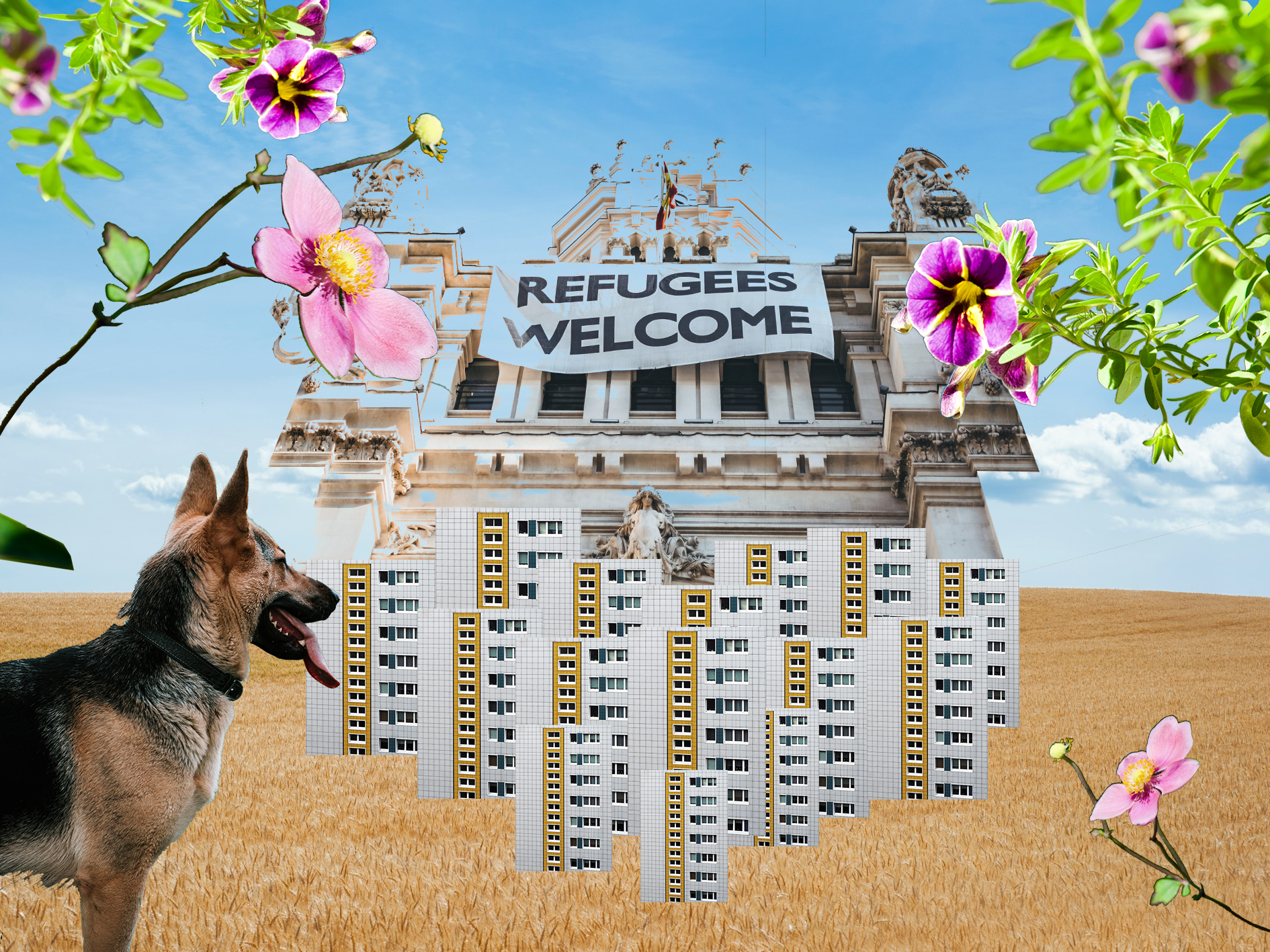3 billboards and 1 standing poster at Franz-Neumann-Platz underground station
100 packages of seeds at local vendors, with an essay by the artist
www.neophytes.cargo.site
In »Neophytes« SASHA AMAYA turns an eye to observing plant life and understanding the different strategies plants pursue when arriving in a new land. From assimilation to dominance to subversion, »Neophytes« reflects on the ways that we — as humans and as plants — take up strategies in our homemaking processes. Through collage, writing, and seeding, the piece asks questions about the relationship between plants, migration, homemaking, and acceptance.
A neophyte is a plant species which is not considered native to a geographical region, having been introduced in recent times. The word was rarely used until the 19th century, when Western Europe was gripped by a passion for categorization and hierarchization. Exploring the strikingly divisive language that is used to think about and frame plant life and migration in some contexts, the project aims to provoke a conversation about the words and concepts we use to classify each other and the world around us. Through the metaphor of plants, the project invites the public to consider the trajectories of transplantation, change, and accommodation within their own lives and communities, as well as the interwoven, but not straightforward, relationship between human and plant migration, survival, and success.
Exhibited in Franz-Neumann-Platz underground station, the three digital collages build on the juxtaposition of what is considered common and familiar with that which is foreign and strange. Employing popular idioms, as well as images from pop culture and of plant life, the work plays on cultural references and tensions to unpick what it is we mean by belonging to a certain place or being at home.
The first poster centers the common willow tree. Spread from East Asia along ancient trade routes, it was only in the last several centuries that Western Europeans became acquainted with the now famous Weeping Willow. For hundreds of years it has been used for wood and shelterbelts, as well as, more recently, water purification projects. The central collage features rye, a banner declaring REFUGEES WELCOME, and several German shepherd dogs. An established staple in north-eastern Europe, rye is a crop that can grow throughout much of Europe and Eurasia and that has a long history of sustaining many cultures and many peoples. The third poster focuses on the drought- and pollution-resistant Turkish Hazel, which is found commonly in Berlin. While Turkey remains the main producer and Germany the main consumer of hazelnuts, most of the Turkish Hazel trees of Berlin perform a less agricultural role.
A QR code invites visitors to read Amaya’s essay, as well as pick up seed packets placed at different points throughout the neighborhood, provoking an action of planting, promoting plant life and community development, and reflecting on human and non-human migration patterns.
SASHA AMAYA is an artist working in dance, choreography, installation, and spatial design. Using the media of music, movement, dance, art history, collage, text, and architectural surroundings, Amaya is particularly interested in understanding how we frame, utilize, reject, and repurpose historical narratives and techniques in contemporary art work. She holds an MPhil in Architecture and Urban Studies from the University of Cambridge and a Post-Masters certificate from the Royal Institute of Art, Stockholm. Most recently, Amaya’s work as a performer and creator has been exhibited at: Sophiensaele, Berlin (2020); LAKE Studios, Berlin (2020, 2019, 2018); L’Abbaye du Royaumont, Asnières sur Oise (2020); fabrik, Potsdam (2020, 2017); Cité Internationale des Arts, Paris (2020); Somerset House, London, (2020, 2016); Birkbeck College, London (2020); Haus der Kulturen der Welt, Berlin (2018); Uferstudios, Berlin (2017). Interested in the relationship between artistic and public-making interventions, Amaya founded and edits MVT, an online platform showcasing work at the intersection of landscape, art, and architecture (2015).


